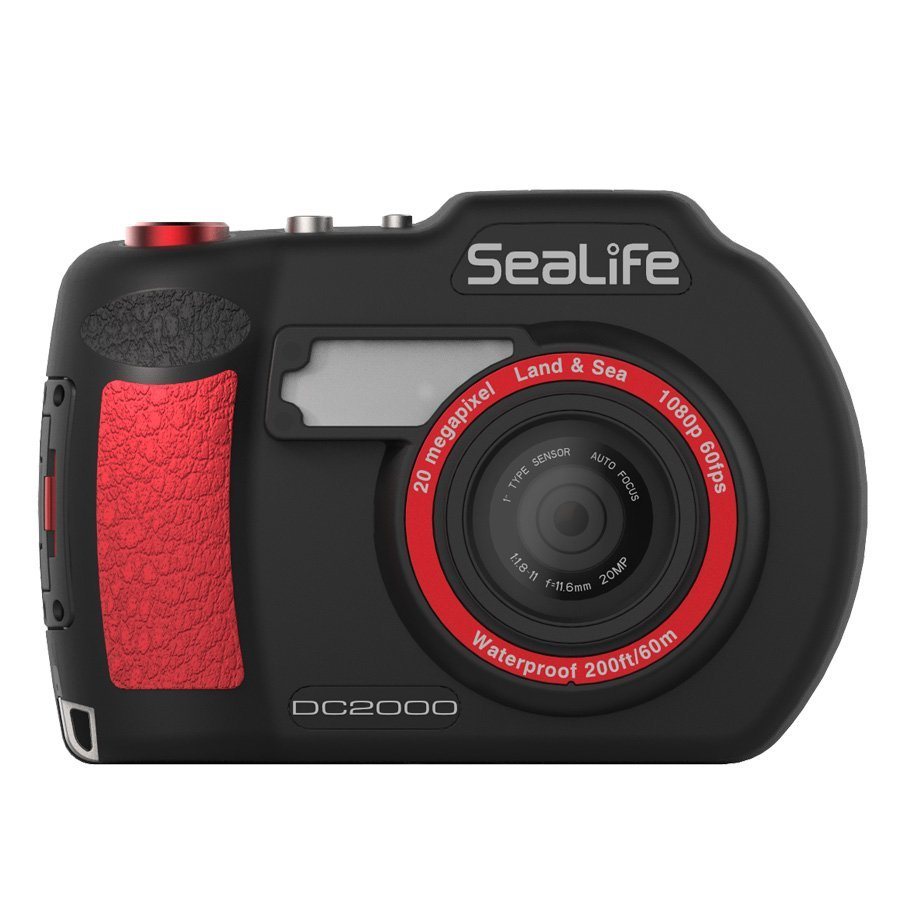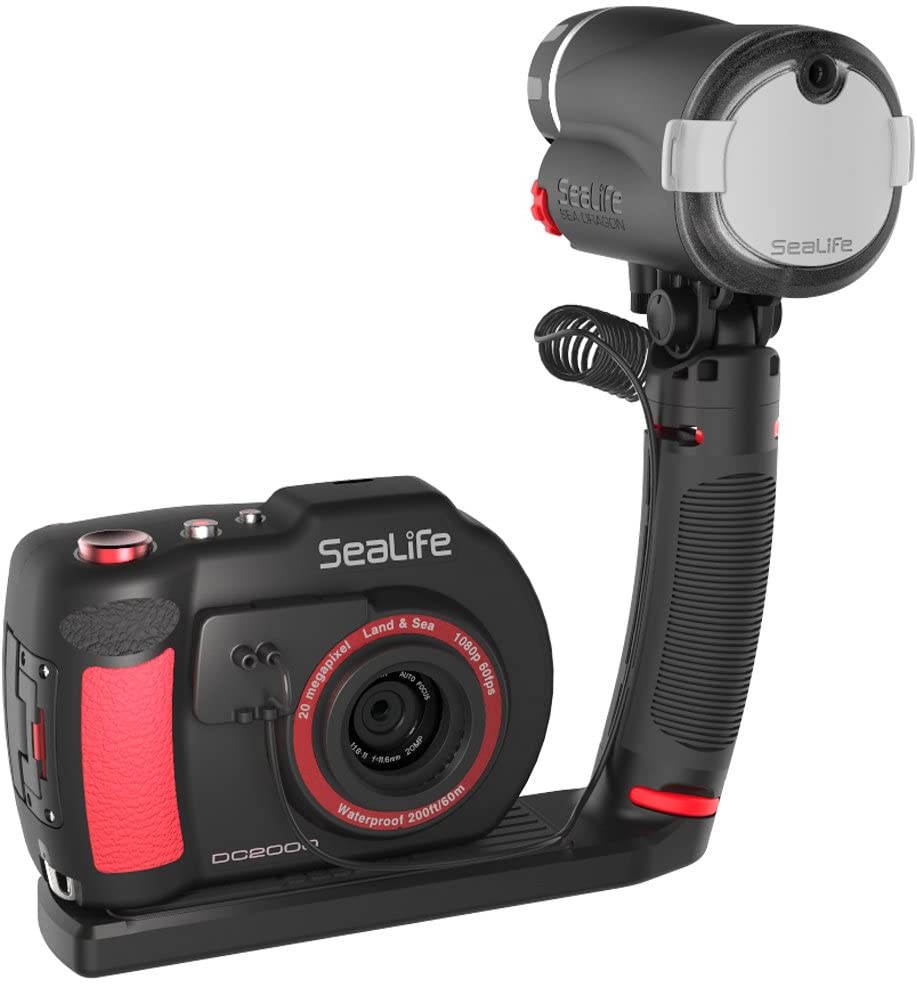Best Diving Camera for Underwater Photography
Key Specs:
- 20 MP Sensor = excellent photographs.
- Only 1080p video though.
- 4 Underwater shooting modes.
- 3 Underwater color correction settings.
- Full manual mode and apeture controls.
- Large LCD screen makes it easy to see what you’re doing.
- Electronic high speed auto focus system.
- Super macro lens.
- Waterproof to 200ft / 60m in waterproof housing.
- Compact and Durable.
- Easy to operate with 4 piano style buttons and shutter.
- 20 MP Sensor = excellent photographs.
Review:
In several ways, the SeaLife DC2000 is similar to it’s smaller, cheaper cousin: the SeaLife Micro 3.0: the DC 2000 has 3 underwater color correction settings and 4 (one more than the micro!) underwater shooting modes and it is also extremely easy to control underwater via 4 piano style buttons and a shutter. Plus, it can allow upside down shooting.
With it’s waterproof casing, the DC2000 is waterproof to 200ft / 60m. It can also be removed from it’s waterproof housing but then it is only waterproof to 60ft / 18m, so it’s best to leave it within the casing unless you’re just snorkelling.
These are rugged and compact dive cameras – they have full manual mode and apeture controls as well as an easy shortcut mode and a total weight of 691 g with it’s housing, making it heavier than the Micro 3.0 but still light enough for travel.
The major difference between the DC2000 and the Micro 3.0 is that the DC2000 takes more detailed photographs because it has a 20MP sensor vs the Micro 3.0’s 16mp sensor. Plus, the lcd screen of the DC2000 is bigger at an impressive 3.0″, which makes it easier to view pictures on during a dive.
However, the DC2000 dive cameras can only shoot 1080p video, whereas the Micro 3.0 can shoot 4K video. Also, the DC 2000 relies on an electronic high speed auto focus system; which is ideal for photographs, whereas the Micro 3.0 relies on a high depth fixed wide angle focus – which is much better for shooting video with.
So it’s pretty simple! If your primary purpose for a scuba diving camera is to shoot underwater videos go for the SeaLife Micro 3.0, but if you’re more interested in underwater photography, choose the SeaLife DC2000.
Don’t forget, both of these waterproof cameras can shoot video and take photos! It’s just that each is better at one of those things than the other.
Another really cool thing about the DC2000 is that it has a super macro camera lens that can focus on objects as close as 3.5″ / 9cm which makes it ideal for macro photography (photographing small critters!).
As with the Micro 3.0, the DC2000 has a range of extra accessories that can also be bought including a table mounting, underwater lighting rig and additional lenses.
Although it won’t capture as detailed photographs as the Canon Powershot G7XIII the SeaLife DC2000 makes up for this by being especially orientated for divers and this shows with it’s easy controls, piano style buttons and underwater shooting modes.
PROS:
- Takes superb photos with 20MP sensor.
- Super Macro Lens for Macro Photography.
- 4 Underwater shooting modes.
- 3 Underwater colour correction settings.
- Easy to operate underwater.
- Huge lcd screen.
- One of few dedicated diving cameras.
CONS:
- Only shoots 1080p video.
- Not as straight forward to control as the Micro 3.0.
- Heavier than other underwater cameras.

